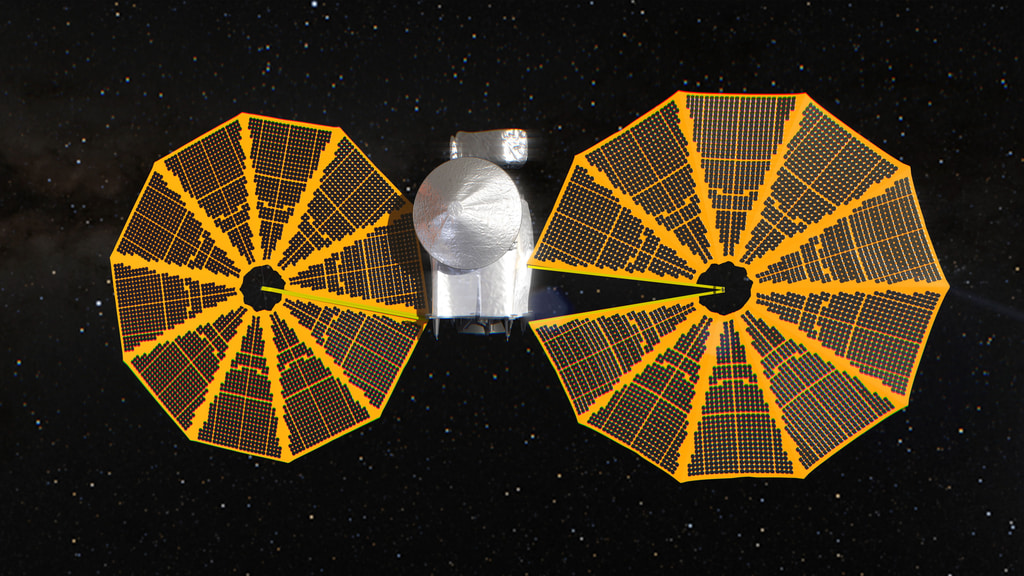Studying Trojan Asteroids with Lucy
This video highlights the Lucy mission's four main science objectives, and the instruments aboard the spacecraft that will be utilized for the data collection.
Music provided by Universal Production Music: "Feels Good" - Wally Gagel & Xandy Barry [ASCAP]
Watch this video on the NASA Goddard YouTube channel.
Launching in 2021, NASA's Lucy Mission will fly by seven different Trojan asteroids that are orbiting the same distance from the Sun as Jupiter. The mission will address the following science objectives:
Surface Geology - Lucy will map the albedo, shape, crater spatial and size-frequency distributions, determine the nature of crustal structure and layering, and determine the relative ages of surface units.
Surface Color and Composition - Lucy will map the color, composition and regolith properties of the surface of the Trojan asteroid and determine the distribution of minerals, ices, and organic species.
Interiors and Bulk Properties - Lucy will determine the masses and densities, and study sub-surface composition via excavation by craters, fractures, ejecta blankets, and exposed bedding.
Satellites and Rings - Lucy will look for rings and satellites of the Trojan asteroids.
Credits
Please give credit for this item to:
NASA's Goddard Space Flight Center
-
Producer
- David Ladd (USRA)
-
Video editor
- David Ladd (USRA)
-
Animators
- David Ladd (USRA)
- Walt Feimer (KBR Wyle Services, LLC)
- Jacquelyn DeMink (USRA)
- Michael Lentz (USRA)
- Jonathan North (USRA)
Release date
This page was originally published on Monday, August 3, 2020.
This page was last updated on Wednesday, May 3, 2023 at 1:44 PM EDT.
